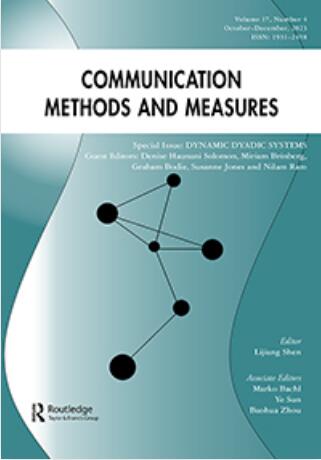A Practical Introduction to Network Neuroscience for Communication Researchers
IF 3.7
1区 文学
Q1 COMMUNICATION
引用次数: 4
Abstract
ABSTRACT The increasing adoption of brain imaging methods has greatly augmented our understanding of the neural underpinnings of communication processes. Enabled by recent advancements in mathematics and computational infrastructure, researchers have begun to move beyond traditional univariate analytic techniques in favor of methods that consider the brain in terms of evolving networks of interactions between brain regions. This network neuroscience approach is a potential boon to communication and media psychology research but also requires a careful look at the complications inherent in adopting a novel (and complex) methodological tool. In this manuscript, we provide an overview of network neuroscience in view of the needs of communication neuroscientists, discussing considerations that must be taken into account when constructing networks from neuroimaging data and conducting statistical tests on these networks. Throughout the manuscript, we highlight research domains in which network neuroscience is likely to be particularly useful for increasing theoretical clarity in communication and media psychology research.通信研究人员网络神经科学实用导论
越来越多的采用脑成像方法极大地增强了我们对通信过程的神经基础的理解。由于最近数学和计算基础设施的进步,研究人员已经开始超越传统的单变量分析技术,转而采用从大脑区域之间相互作用的进化网络的角度来考虑大脑的方法。这种网络神经科学方法对传播和媒体心理学研究来说是一个潜在的福音,但也需要仔细考虑采用一种新颖(和复杂)的方法工具所固有的复杂性。在这份手稿中,我们提供了网络神经科学的概述,鉴于通信神经科学家的需要,讨论必须考虑的因素,从神经成像数据构建网络,并对这些网络进行统计测试时。在整个手稿中,我们强调了网络神经科学可能对提高传播和媒体心理学研究的理论清晰度特别有用的研究领域。
本文章由计算机程序翻译,如有差异,请以英文原文为准。
求助全文
约1分钟内获得全文
求助全文
来源期刊

Communication Methods and Measures
COMMUNICATION-
CiteScore
21.10
自引率
1.80%
发文量
9
期刊介绍:
Communication Methods and Measures aims to achieve several goals in the field of communication research. Firstly, it aims to bring attention to and showcase developments in both qualitative and quantitative research methodologies to communication scholars. This journal serves as a platform for researchers across the field to discuss and disseminate methodological tools and approaches.
Additionally, Communication Methods and Measures seeks to improve research design and analysis practices by offering suggestions for improvement. It aims to introduce new methods of measurement that are valuable to communication scientists or enhance existing methods. The journal encourages submissions that focus on methods for enhancing research design and theory testing, employing both quantitative and qualitative approaches.
Furthermore, the journal is open to articles devoted to exploring the epistemological aspects relevant to communication research methodologies. It welcomes well-written manuscripts that demonstrate the use of methods and articles that highlight the advantages of lesser-known or newer methods over those traditionally used in communication.
In summary, Communication Methods and Measures strives to advance the field of communication research by showcasing and discussing innovative methodologies, improving research practices, and introducing new measurement methods.
 求助内容:
求助内容: 应助结果提醒方式:
应助结果提醒方式:


